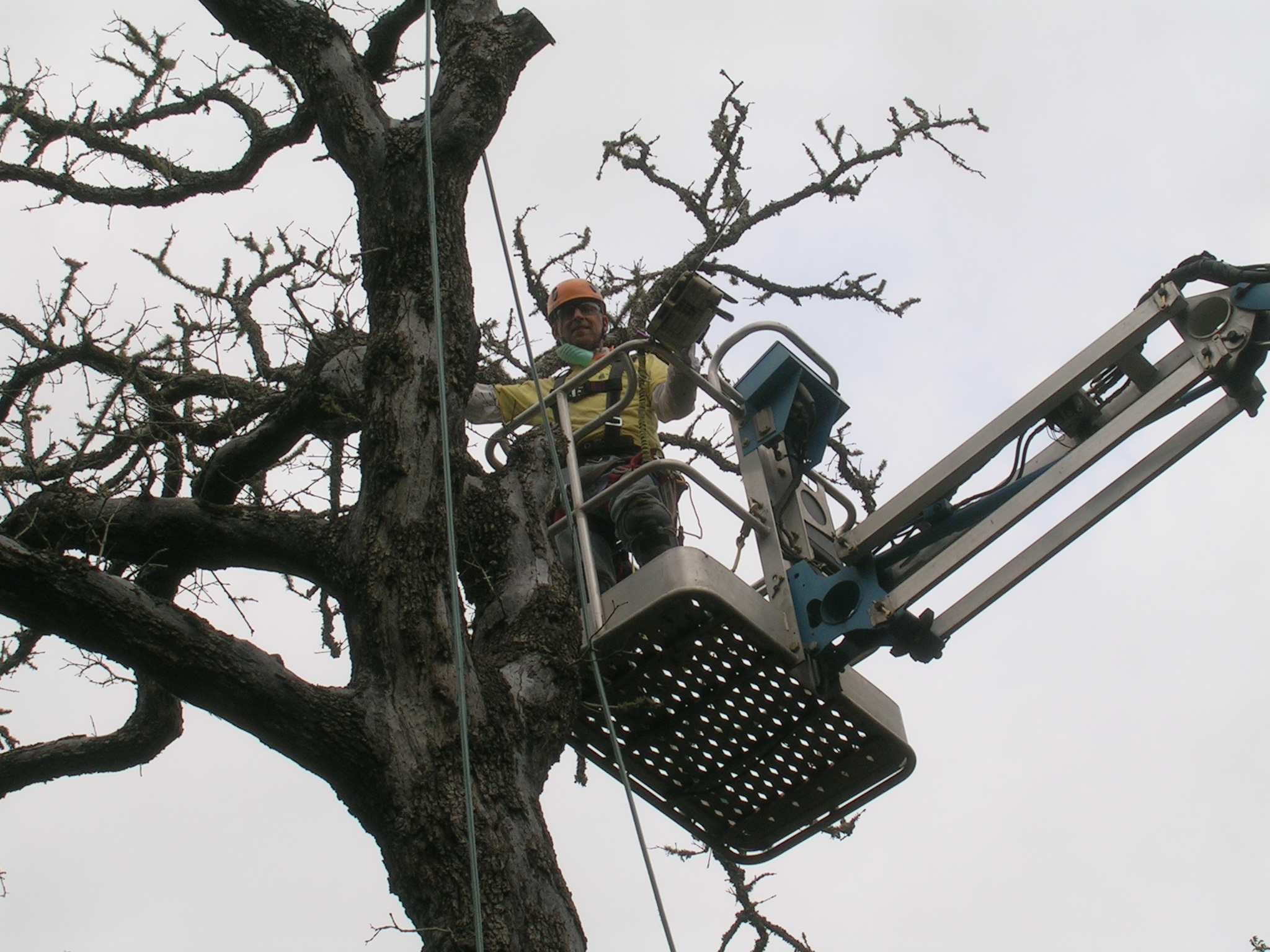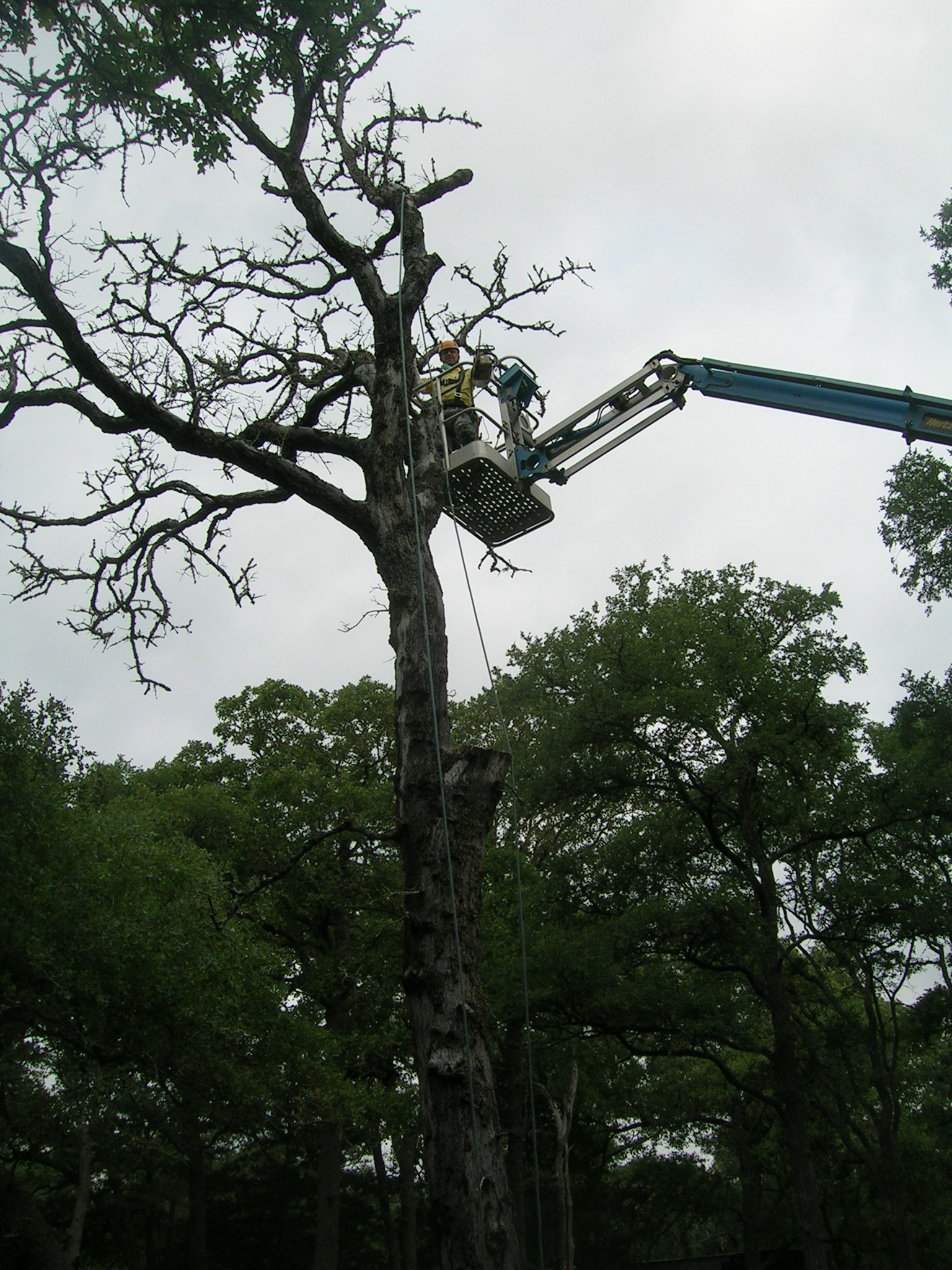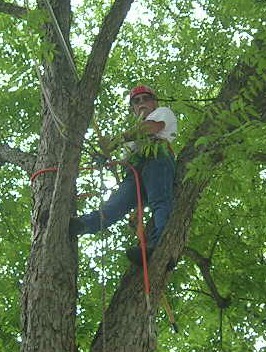
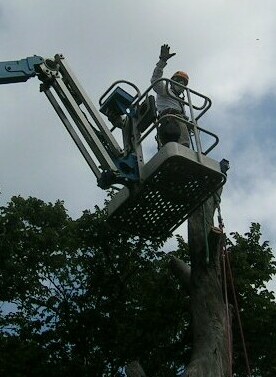
**************************************
At this site, we were called out to remove a very large branch from a Cedar Elm that had split from its parent branch but was not yet free to fall. Lucky for the owner, as it was perched directly over his new storage shed!
Using our tree winch, blocks, bollard and rigging lines, we set everything up for a safe cut and bring-down.
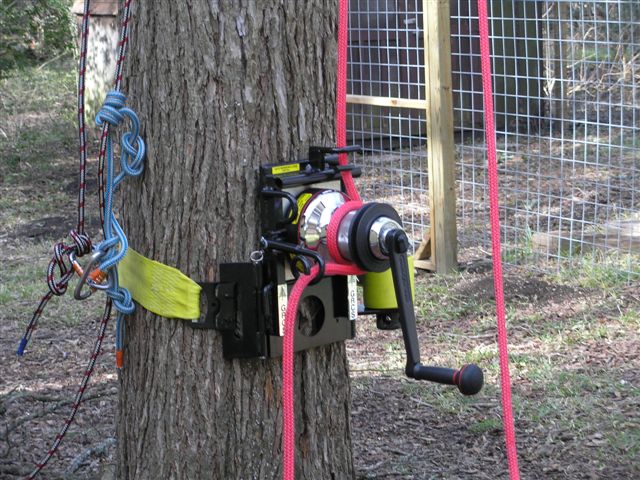

As we started our cut, the owner came out and said he was praying for us! The power of prayer was appreciated, as our cut was made and the limb hung perfectly suspended!

After a little celebration with the owner, we brought our hazardous branch down to earth!

Mission Accomplished!
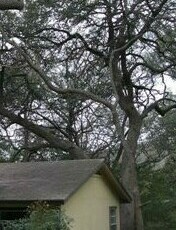
**************************************
If you have just had new trees planted on your property, you should check to see how mulch was applied at the base of each tree. Time and time again, we are called out by homeowners who have had landscaping crews plant new trees on their properties. These landscaping folks may know about mowing and flowers and such, but they are NOT certified arborists, and their lack of knowledge, when it comes to trees, can be deadly! We usually get the call when the new trees are dying or already dead, and we almost always know, beforehand, what has happened. In the two pictures below you will see the base of a Bradford Pear that was planted by a landscaping crew.
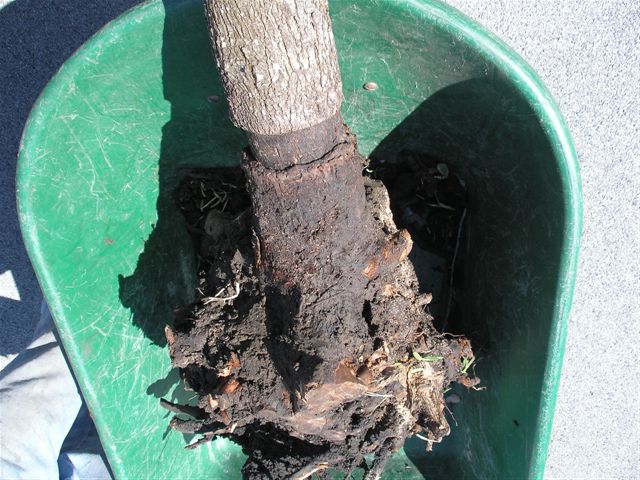
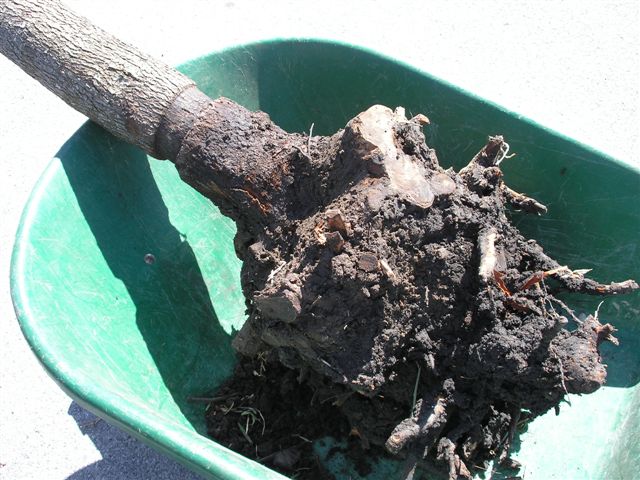
For some reason, these crews love to pile the mulch a foot or more up from the tree's root flare. This causes the bark to rot from excessive moisture and allows opportunistic organisms to close in for the feast! Without its outer conductive tissue and protective bark (the condition seen here as the indented ring around the tree), the tree is doomed. If you have trees that have mulch piled on, go out and clear the mulch away from them. Create a swale and berm around each tree, with the raised berm about 2-3 feet from the root flare. In this way, your trees will stay healthy, and will live to grow and realize their full potential.
*********************************
Another call we often get involves trees that have become too bushy at the bottom of their canopies. Light and air flow are blocked, and this leads to fungal infections like leaf spot and other diseases.
Here you see a Live Oak that is far too bushy.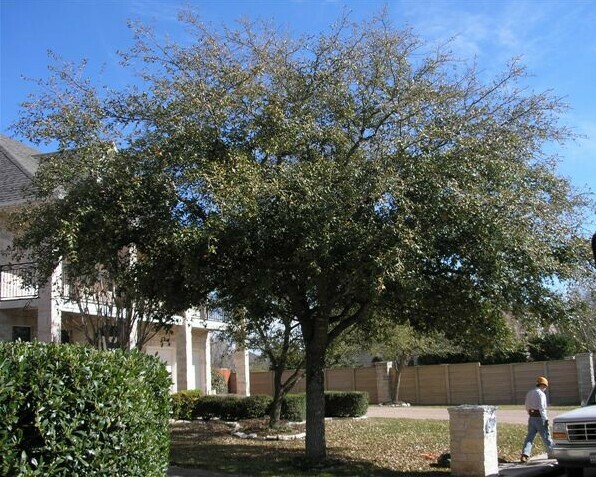
We worked on this tree for two hours to give it a chance to get light and air to its lower limbs and show its owners just how good it could look.
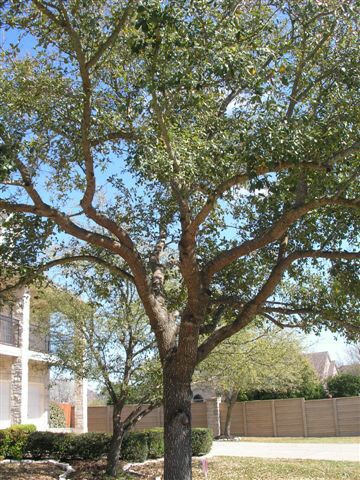
Hard to believe it's the same tree! I'm putting on my harness and going back up there. It's now fun to climb in!
**************************************
This sixty foot high hackberry had outgrown its cozy site at the end of the driveway. It had become a hazard tree because of its large, falling limbs. Adding to the hazard, and to the extreme difficulty of its removal, this hackberry was sandwiched between two electrical feed lines to houses on either side. One touch of these wires by anyone working on this tree, let alone taking it completely down, would be fatal. The experienced arborists at Sunrise Tree Services stepped up to the plate and did the job right! Using our rigging skills and the proper equipment, we were able to safely remove this tree in a single day.
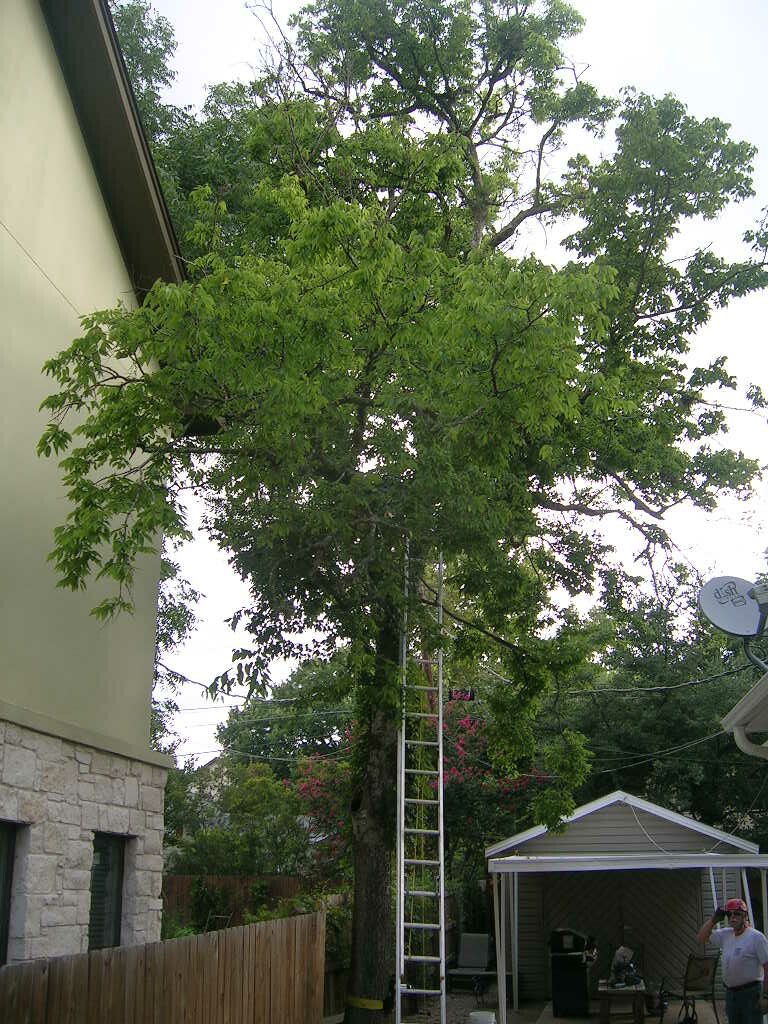
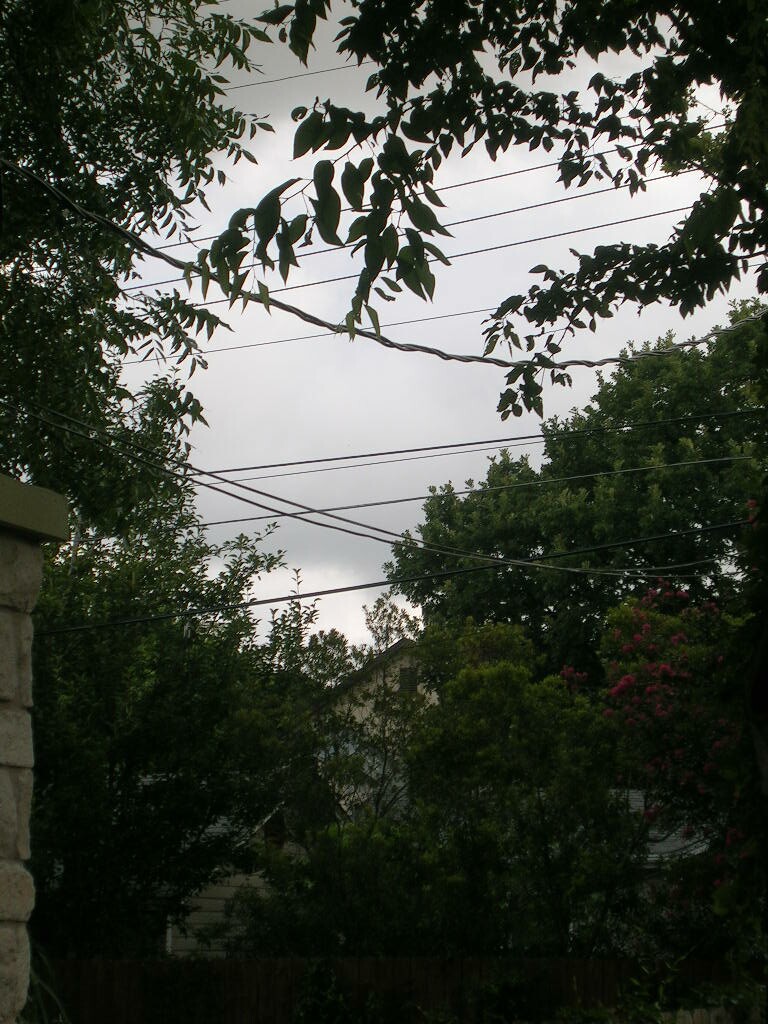
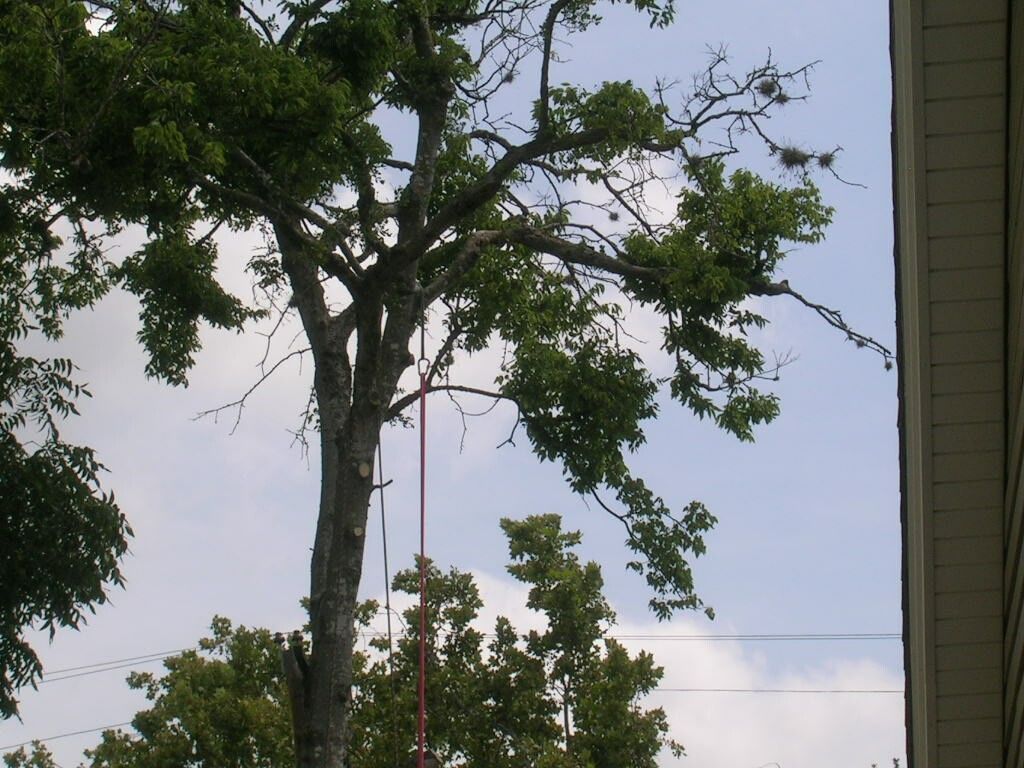
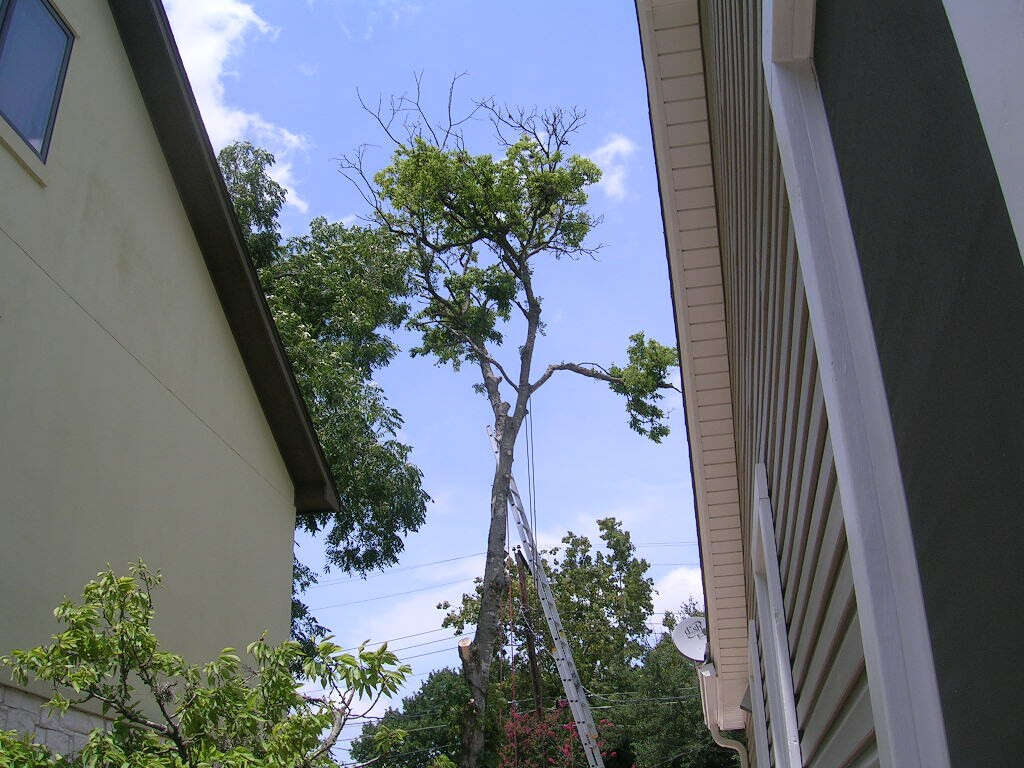
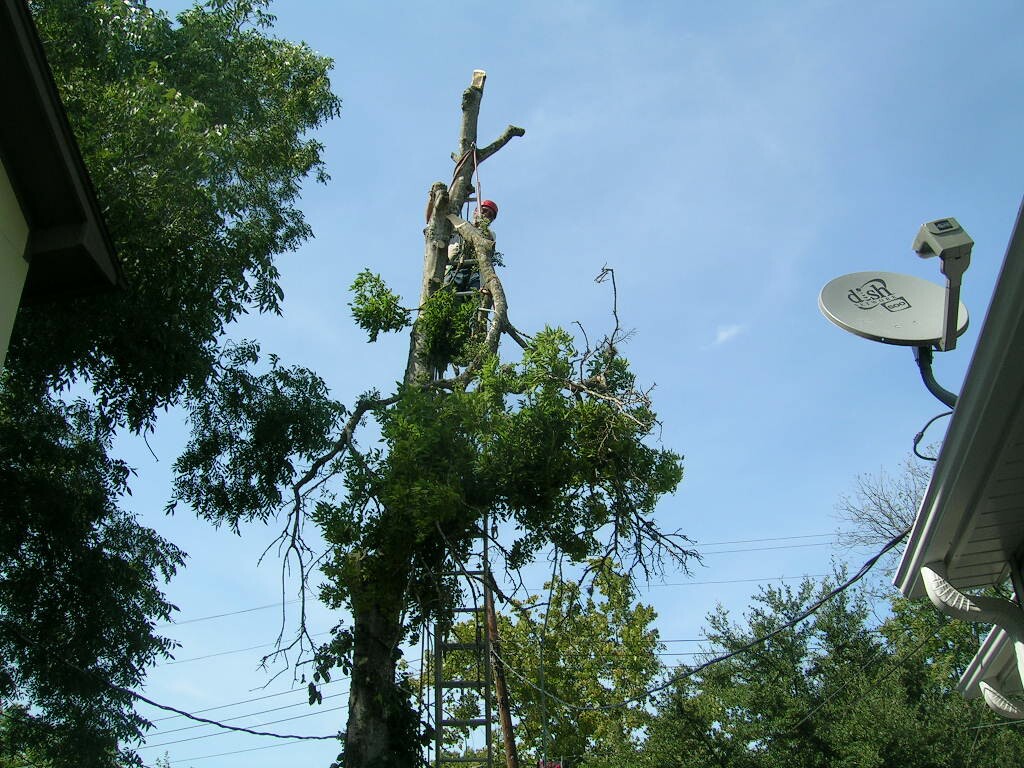
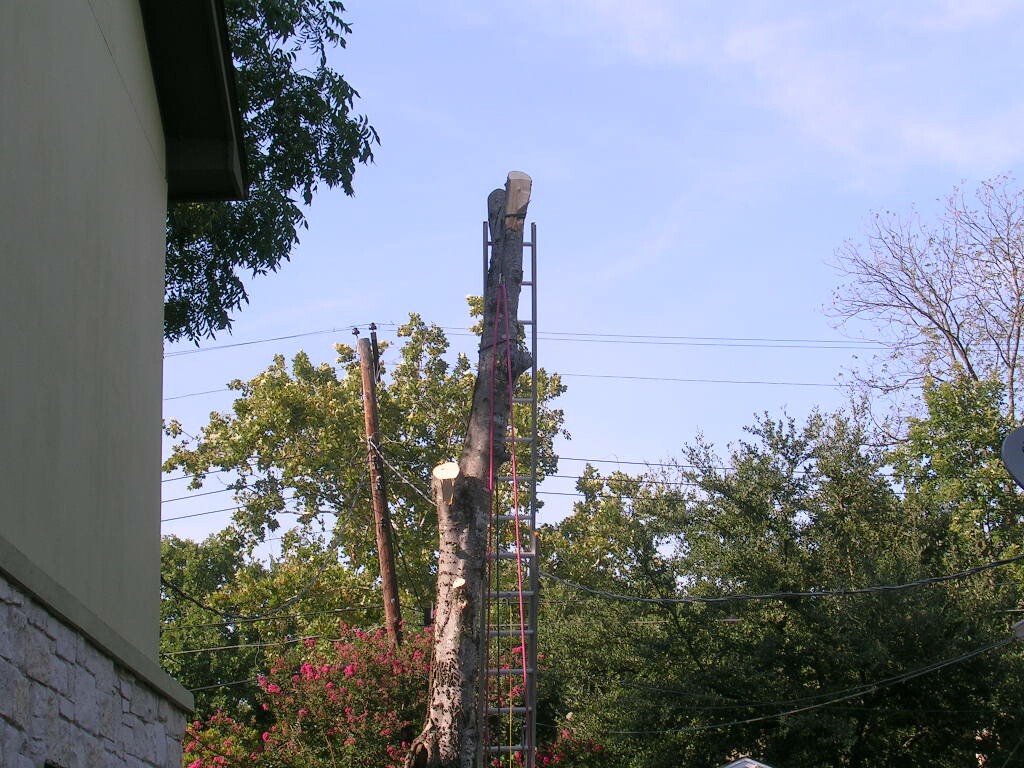
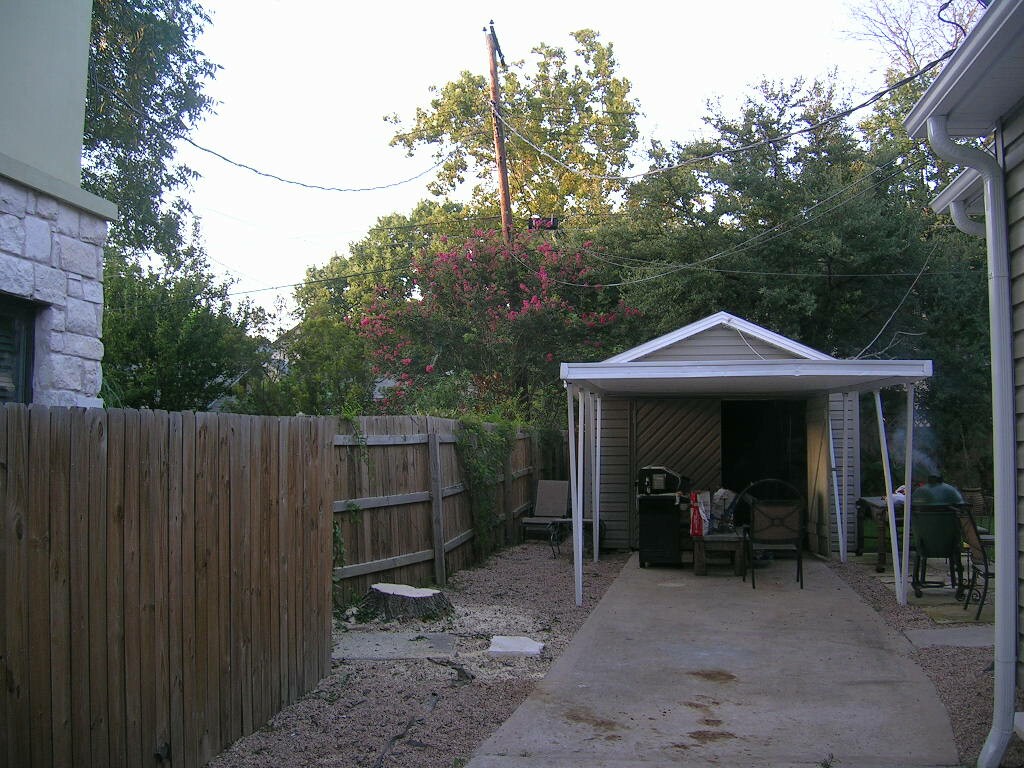
**************************************
Sunrise Tree Services can do crane removals for those trees that have died and are in danger of falling over on your property, and for live trees that have suffered serious storm damage to the point where they cannot be safely climbed and taken down without a crane.
On this job we needed to use two cranes to safely take down a very large Post Oak that was located less than two feet from a swimming pool in the courtyard of an apartment complex. The roots had been cut on the pool side of the tree and the crown was top-heavy on that side. When a storm blew in, the tree failed and ended up falling over the pool to get caught on the roof of the apartment wing on the far side of the pool. Without a crane supporting it, there was no way I could climb it, safely, and rig out the limbs, which were sailed over the complex by the second crane.





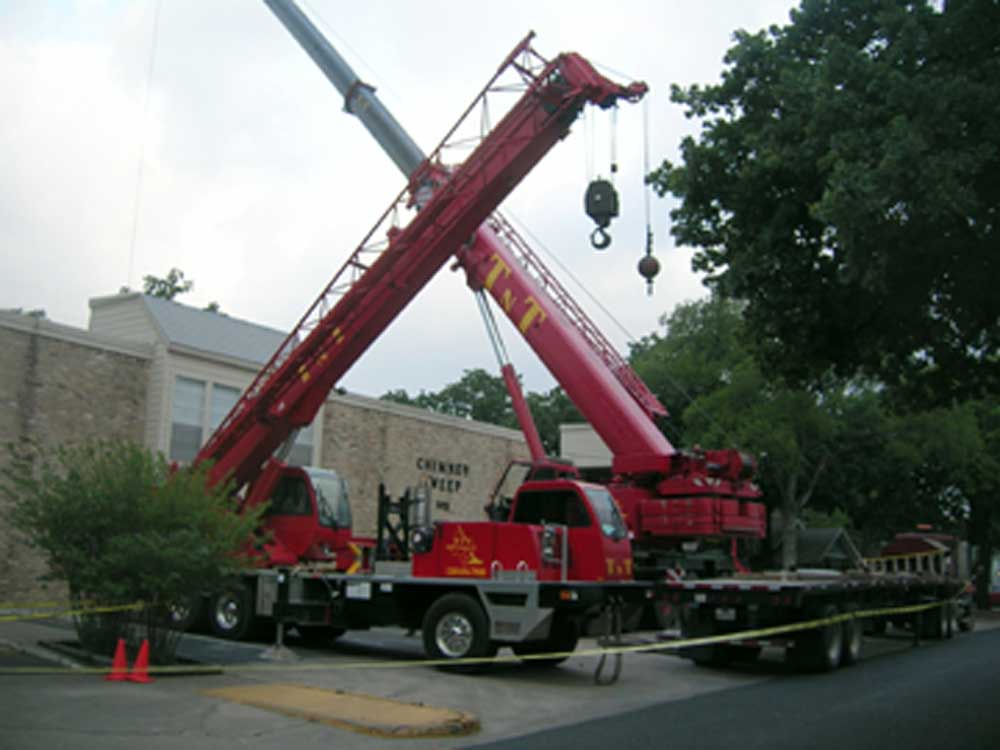
Once I attached a sling to the trunk of the tree and then to the ball of the 165 ton crane, I began taking the weight off of the tree in preparation for lifting the trunk up and out of the courtyard.
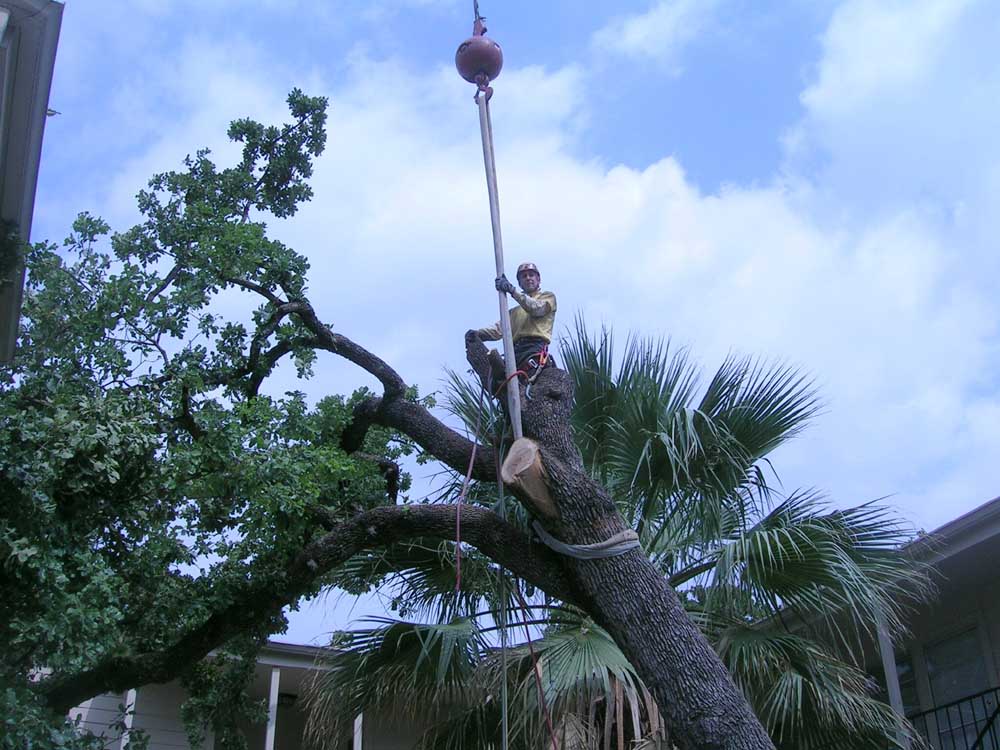
As I rigged and cut each limb, the 75 ton crane lifted them up and over the complex and then set them in my trailers, in front. In a very short time, only three hours, versus the eight hours it would have taken without the cranes, we were ready to cut the trunk at its base and sail it over the complex using the big crane. I cut it, and up it went!
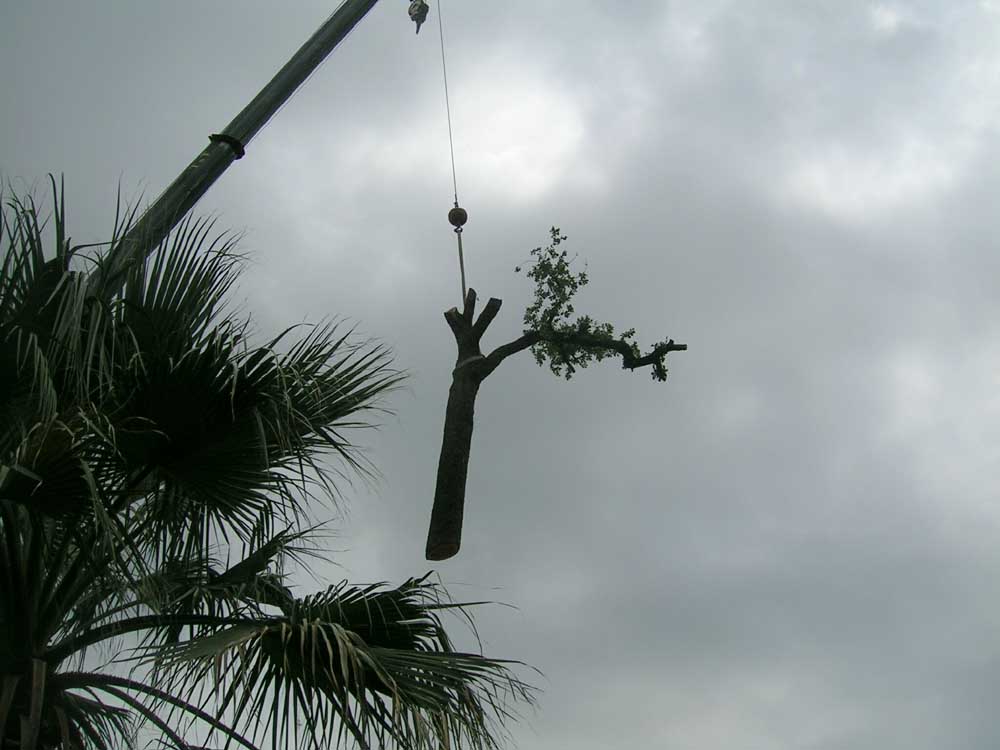
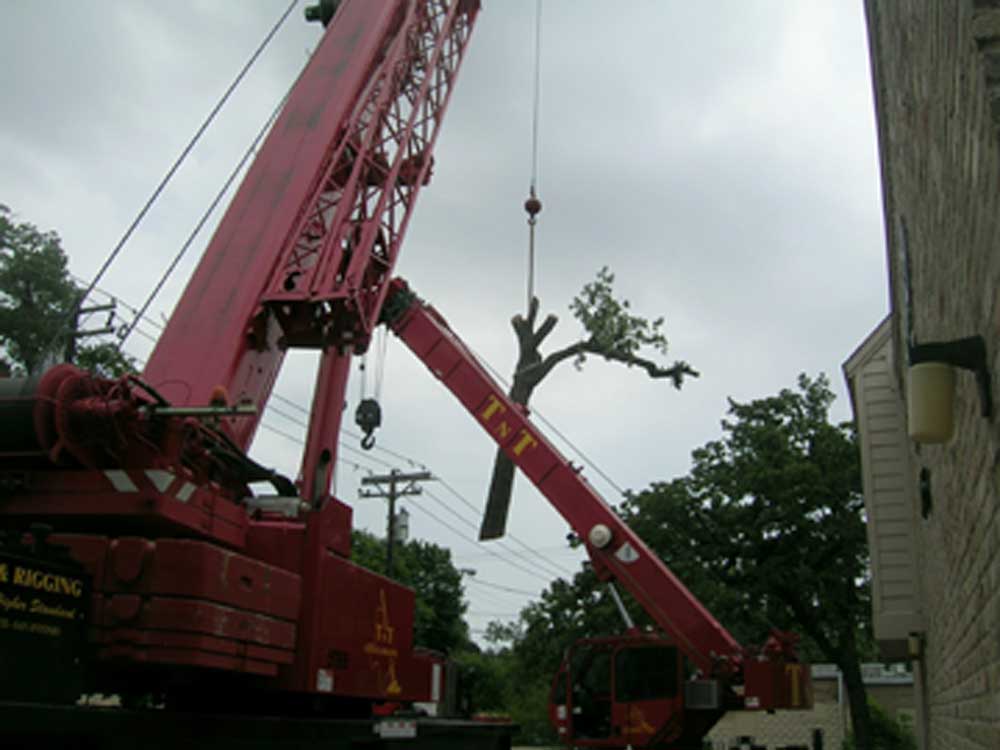
All of the limbs were loaded and the cranes packed up only four hours after we began the job. What a time, and labor, saver!
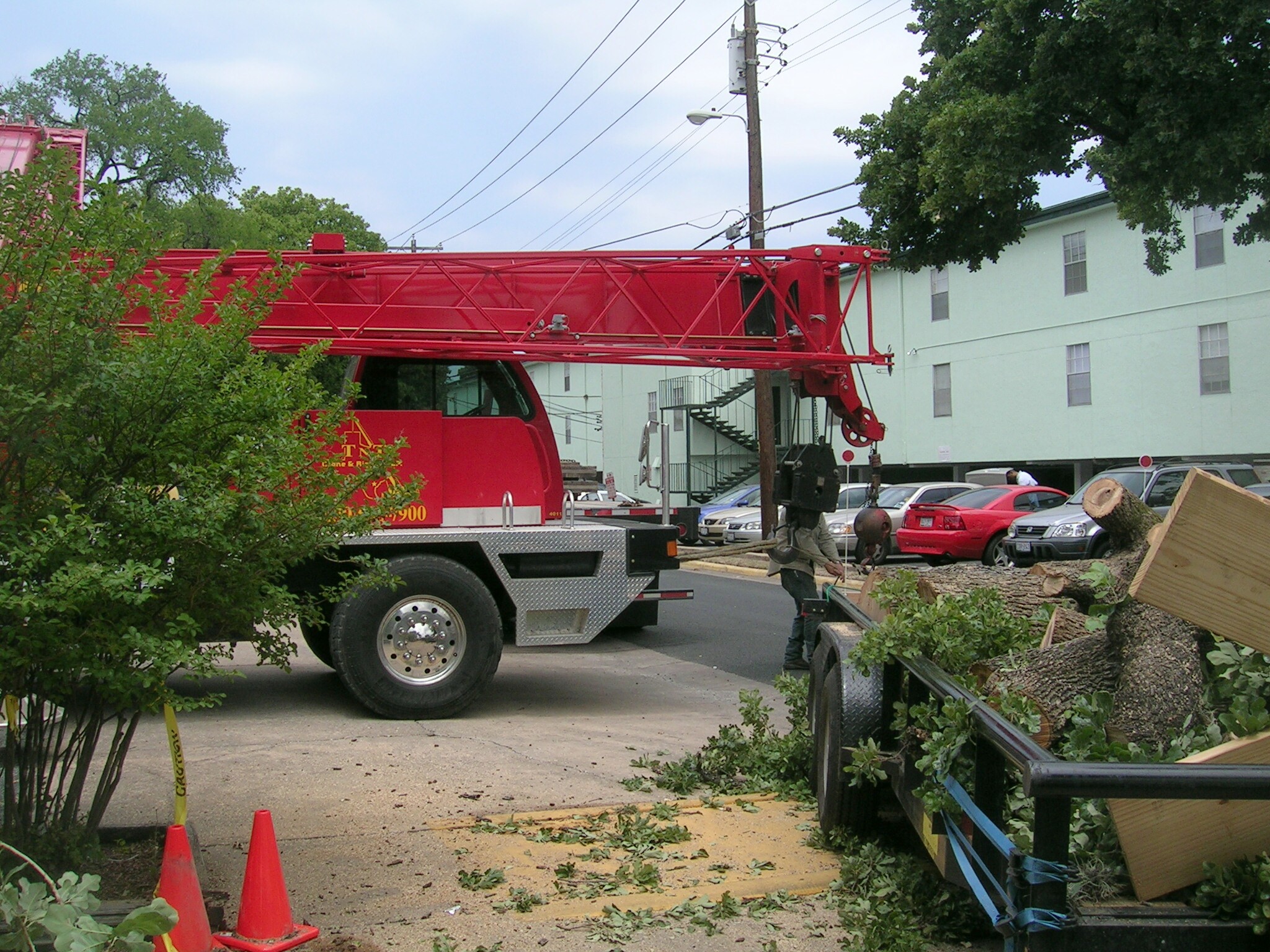
**************************************
When a tree has been dead for a while, it is no longer safe to climb. Even so, it must be removed to keep people and property around it safe and sound. At Sunrise Tree Services, we use our mechanical lift to remove dead trees in a manner that not only keeps our employees safe, but also protects you and your property beneath the tree.
